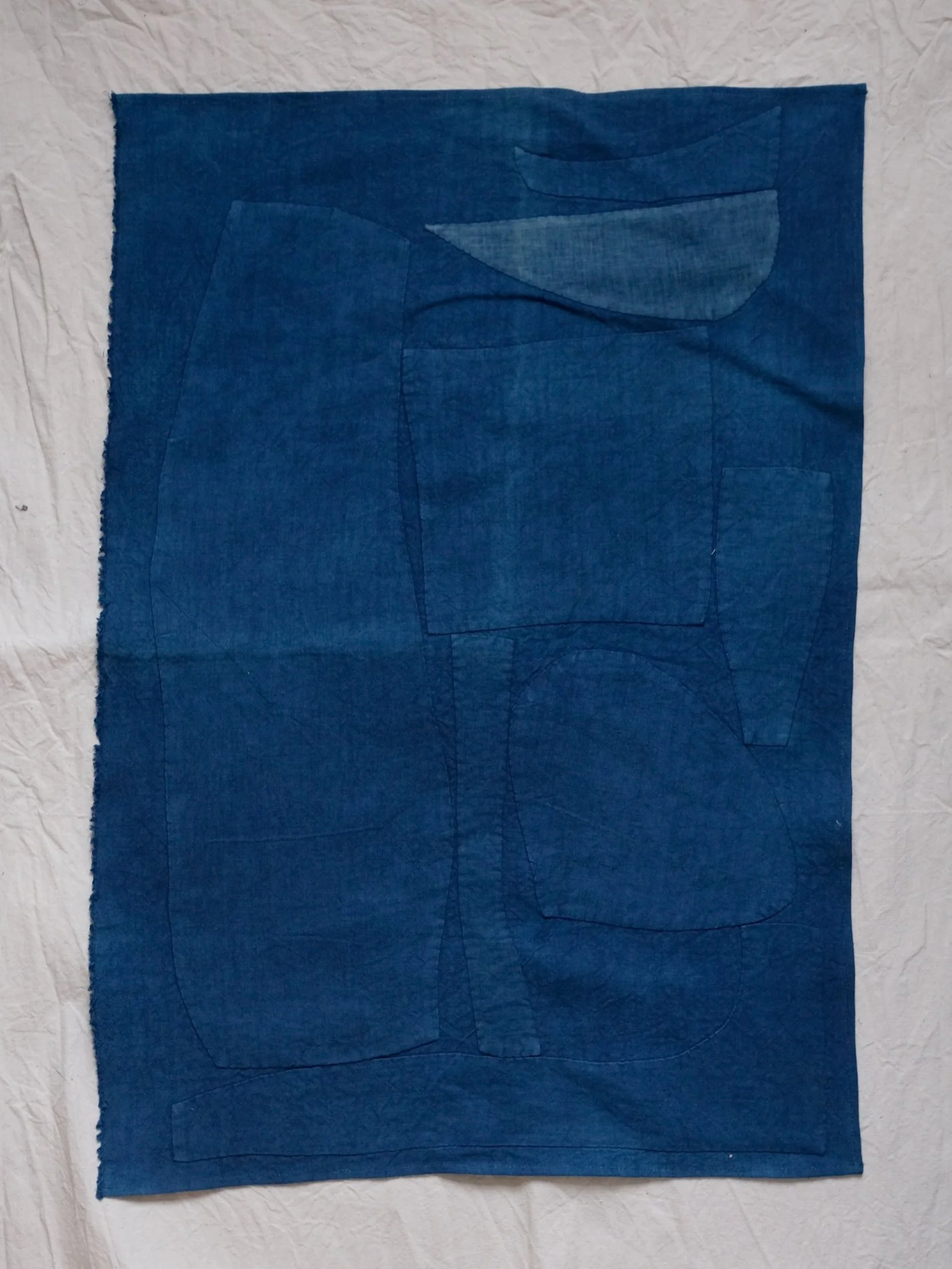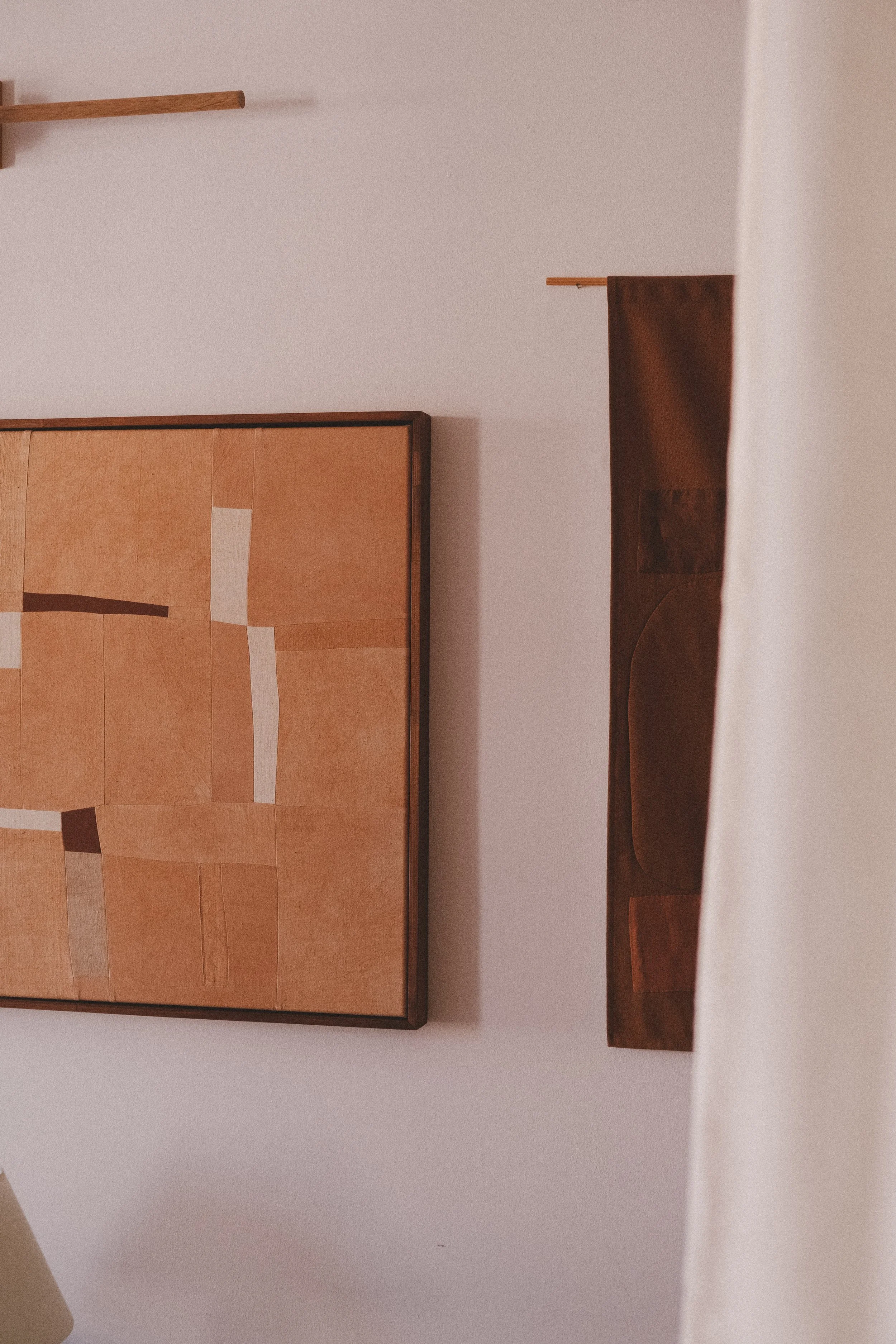The Shape of My Practice
My work begins with simple materials and familiar processes — cloth, paper, pigment, and the fragments I keep or find along the way. I’m drawn to the kinds of actions I learned early on: cutting, arranging, stitching, assembling. These gestures feel close to the everyday and carry a sense of memory. They keep the work grounded — rooted in simple, familiar ways of making. Over time, these small movements have shaped the rhythm of how I work, guiding the way ideas surface and take form.
As the year has unfolded, I’ve found myself returning to what feels essential. Rather than stretching the work outward, I’ve been looking more carefully at how forms shift between materials — how a shape can move from cloth to paper, how a line or mark can translate across surfaces, how the inherent qualities of each material suggest different outcomes. I’m interested in the relationships between these elements: how a form repeats, alters, or settles differently depending on what it’s made from; how certain processes feel rooted in memory; how materials can speak for themselves when given space. My work has never sat neatly inside one discipline. It moves between textiles, paper, objects, and gathered materials as connected ways of thinking and making.
Indigo Dyed Assemblage
Most ideas begin in a small moment: a colour, a shape, a memory of a place, or something found and kept. From there, the work grows through the material itself — stitched, layered, cut, joined, or arranged. Some pieces need the depth and slowness of quilted cloth; others ask for the immediacy of pigment or the directness of paper. What holds them together is the process: steady, intuitive, and grounded in touch.
The work rarely moves in a straight line. It loops and returns, allowing pieces to lead one another. A textile study may open into a composition on paper, which then suggests a shift in scale or a new approach to form. Increasingly, I see my practice as a set of connected paths — each one offering a different way of thinking, each feeding the next.
I’ve been paying attention to how the different parts of what I do naturally overlap. Sewing, composing, gathering, arranging, observing — they come from the same place, shaped by a familiar way of noticing and working. The things I make and the things I collect grow from the same impulse. Quilts and textile works often emerge from questions of rhythm, form, and memory. The objects I live with reflect a similar curiosity — a way of creating spaces that feel inhabited and connected. Collecting has always been part of how I work: arranging things, noticing their stories, finding relationships between materials and forms.
Caer Paintings
Sharing aspects of my process follows the same instinct. Workshops, tools, and resources are simply extensions of the work — ways of offering others a path into the methods that ground my practice. They open small windows into the making without changing its centre. At the heart of everything remains the act of making itself: cutting, layering, stitching, composing, assembling. These gestures keep the work honest, reminding me that meaning grows through touch, repetition, and attention.
As my work shifts into its next phase, I’m thinking less about expanding and more about refining. A return to what feels essential: the materials I’m drawn to, the forms that feel most alive, and the slower ways of working that allow ideas to unfold with intention. It feels like a period of clarity — a pulling back to the centre, grounding the work in focus rather than scale.
This journal entry is a marker — a moment to acknowledge how my practice has deepened, what continues to guide it, and where it might be heading. A way to hold the centre of the work, even as it keeps moving.
At its core, my work remains what it has always been: shaped by materials, guided by enquiry, and grounded in the belief that making is a way of understanding.
A Pri - Clay Dyed Assemblage for Stay Crafted Hotel in Battle, Sussex.



